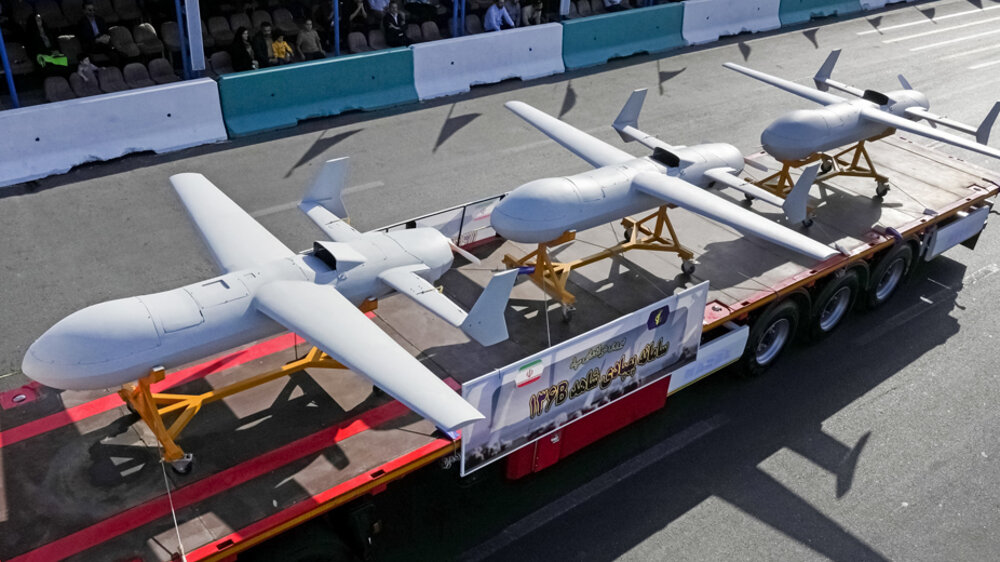Former IRGC commander says Iran’s missiles and drones now outperform Russia

TEHRAN – Former IRGC commander Major General Aziz Jafari has highlighted Iran’s advanced missile and unmanned aerial vehicle (UAV) capabilities, asserting that the country’s defence achievements have been developed independently and now surpass those of Russia.
The remarks were made in an interview on Saturday.
“We have never relied on the Russians for our military capabilities,” Jafari said. “In the early years after the Islamic Revolution, during the first decade, Libya and North Korea provided some assistance. We would consult them on certain technologies or were granted permission to reverse-engineer some of their missiles. But Russia offered no support during that period.”
Jafari stressed that while Russia may not face limitations in missile range or payload, it still lags behind Iran in precision and technological sophistication. “In terms of range and volume, they have no problem. But when it comes to accuracy and the technology we have achieved, there are clear differences. On the contrary, the Russians now need missiles and drones like ours, and I doubt they possess the same level of pinpoint accuracy,” he said.
Iran has steadily cultivated an indigenous missile program since the 1980s, developing short-, medium-, and long-range ballistic missiles as well as advanced surface-to-surface and surface-to-sea systems. These capabilities have been complemented by a growing arsenal of precision-guided drones, which together form a central component of Iran’s regional deterrent strategy.
Iranian commanders say these capabilities were successfully integrated during the recent 12-day confrontation with Israel. The conflict, which was triggered by a blatant Israeli attack on June 13, claimed at least 1,064 lives, including military commanders, nuclear scientists, and civilians. Iran also condemned U.S. airstrikes on three Iranian nuclear sites during the same period, calling them a grave violation of international law.
In response, the Iranian Armed Forces targeted a wide range of strategic sites across the occupied territories and beyond, including the al-Udeid air base in Qatar — the largest U.S. military installation in West Asia. The IRGC launched a meticulously calculated series of missile and drone strikes over twelve days, reportedly executed in 22 operational waves. These strikes disrupted Israeli military, intelligence, and technological infrastructure, forcing a halt to hostilities.
Among the key targets were Israel’s Kirya headquarters, often referred to as the country’s “Pentagon,” as well as major airbases, intelligence training centers, and command-and-control facilities housing advanced technology such as U.S.-made F-35 stealth fighters. Iranian officials described the strikes as precise, cost-effective, and highly efficient.
International observers have also noted the strategic impact of Iran’s UAV program. A report by The Wall Street Journal highlighted that firms in the U.S., China, France, and the UK are developing armed drones modelled after Iran’s Shahed UAVs. According to the report, Shahed-inspired designs appeared among 18 U.S. drone prototypes displayed at a Defence Department event this summer. Companies such as SpectreWorks, Griffon Aerospace, and Sweden’s Saab are producing drones modelled on Iranian systems for both operational and target-practice purposes, demonstrating the global influence of Tehran’s technology.
Jafari emphasized that Iran’s successes reflect decades of independent research, development, and operational expertise. “Our missile and drone programs are the result of persistent effort, technological innovation, and the experience we gained during conflicts over the past four decades,” he said. “This progress ensures that Iran remains a credible and effective deterrent against any regional or foreign threat.”
Despite making significant strides, the Iranian military has been instructed to continue its technological advancements in missiles and drones. Earlier this month, Iran's security chief, Ali Larijani, stated that the constant modernization of the military is the country's top priority. Meanwhile, Iran is also in full swing to rapidly improve areas that revealed shortcomings during the U.S.-Israeli aggression, specifically its defence systems and fighter jets.
